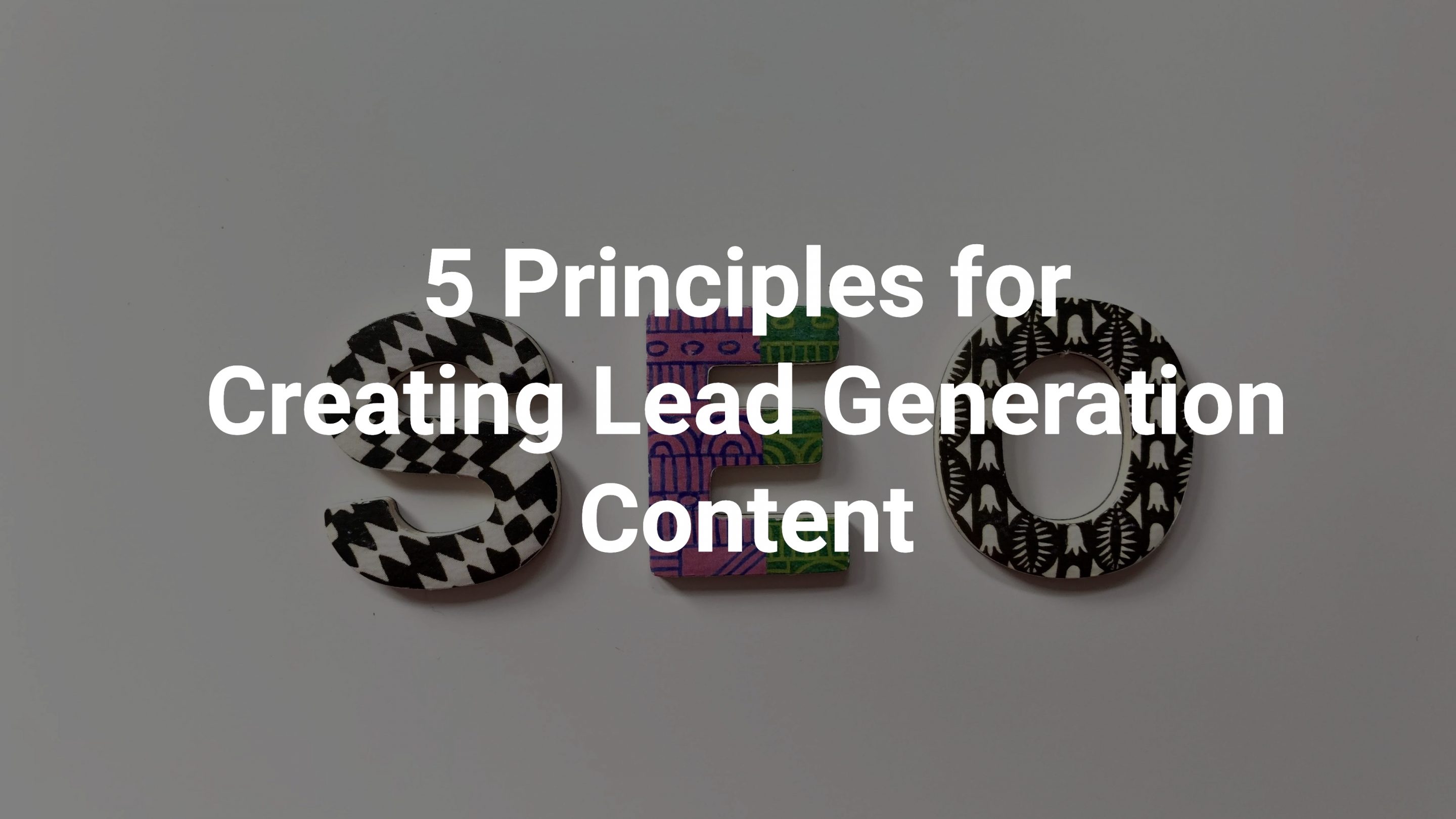Content creation is one of the best ways for technology companies to consistently generate leads.
But how do tech marketers create engaging content that doesn’t get lost in the sea of other blog posts, podcasts, and videos published every day?
Just creating more haphazard content isn’t the answer. Every tech company needs a sustainable content marketing strategy that helps the business grow. Every piece of content needs to have a purpose and be meaningful to the audience.
Here are five principles for creating a lead generation content strategy that builds a path to the sale for tech companies.
1. Conduct Market Research to Determine Your Audience’s Biggest Pain Points
To create content that resonates with your audience, builds trust and attracts consistent leads, you must understand your audience. When you know what your customers are struggling with, you’ll be able to create content that addresses those needs and offers them value.
These days, when your customers have a problem, they go to a search engine to look for a solution. Doing research on what keyword phrases they’re searching for can provide valuable insight about the kind of content you need to create.
Do the research to discover the exact words and phrases people are using when they search for your products and services. Your internal SEO expert can conduct this research if you have one. Otherwise, you can bring in a qualified SEO consultant to explore the best keywords for your company.
If you’ve completed SEO research in the past, you may already have a sense of your audience’s biggest problems, but things change over time. For example, if market trends have shifted, if you’ve pivoted your niche, or if your product and customer base have grown, do new research to make sure you’re up to date.
2. Solve Immediate Problems with Lead Magnets
Once you understand what your audience needs, create a lead magnet that helps them solve one small problem. Effective lead magnets build trust in your company and increase the likelihood that your leads will buy from you.
Focus on giving specific information they can use immediately, instead of overwhelming them with a bunch of stuff they don’t need. If you offer only the amount of information they need to fix a minor problem — and do it well — your audience will think of your company when they need to solve a bigger problem.
Webinars, checklists, templates and focused how-to guides all work well for lead magnets, but keep in mind your audience’s needs and figure out what’s going to be most beneficial for them at this stage.
3. Turn Visitors Into Leads With Strong Landing Pages
Once you’ve created an enticing lead magnet that solves a problem, you need a way to get people to sign up for it. Design a clear, attractive landing page to capture email leads and get people on your list so they can receive your lead magnet.
Landing pages don’t need to be complicated. To capture an email lead, your page needs to tell your visitors three things: what you’re offering, why they will benefit from it, and what they need to do next if they want it.
Continually test your landing page to find the combination of headlines, subheads, calls to action and colors that converts the best with your unique audience.
4. Boost Authority With High-Quality, Data-Driven Content for Every Stage of the Buying Journey
Create a content calendar that maps your SEO keywords and insights from customer research with topics you can address in your written, video and audio content. Your goal at every step of the user journey should be to deliver content that speaks to your audience’s needs, in their own language, and builds your company’s authority.
Top-of-funnel content targets potential customers who are looking for answers. They have a problem and they’re looking for a solution that helps them and improves their situation. To create this type of content, start by making a list of the most common questions your prospects ask and create content that answers each of those questions.
In the middle of the funnel, audiences evaluate their options and decide which one is the best choice for them. In this stage, provide content that directly relates to your products and services. Help people get to know your brand, your position in the industry, and your unique approach to solving their problems.
When prospects hit the bottom of the funnel, they are close to buying and have a good sense of what they need. This is the “conversion and purchase” phase. Guide these prospects to the sale by giving them case studies, reviews, testimonials, or content that addresses their objectives.
5. Boost Visibility by Promoting Your Content
In the days of intense competition for attention, it’s not enough to hit “publish” and wait for prospects to stumble across your content. It doesn’t matter how great your blog post or video is If no one sees it.
Create a promotion plan to ensure you’re reaching the right audience with your content.
Optimize your content for social and include compelling, attention-getting images. Then use social media, SEO optimization, email marketing, and referral links to drive traffic. You can also ask influencers to share your content if it’s helpful to their audience.
The Path to Turning Content Into Customers
By starting with in-depth research on your audience’s biggest struggles, you’ll know how to create lead generation content that gives people quick wins. Those winning moments will build trust and boost your authority.
Then you can create data-driven content, from deep-dive blog posts to how-to videos to inspiring case studies. Finally, you’ll promote your content and drive traffic to it so you ensure it’s reaching the right audience.
With these five principles, your content creation will bring you a steady stream of leads and prospects for many months and years to come.
